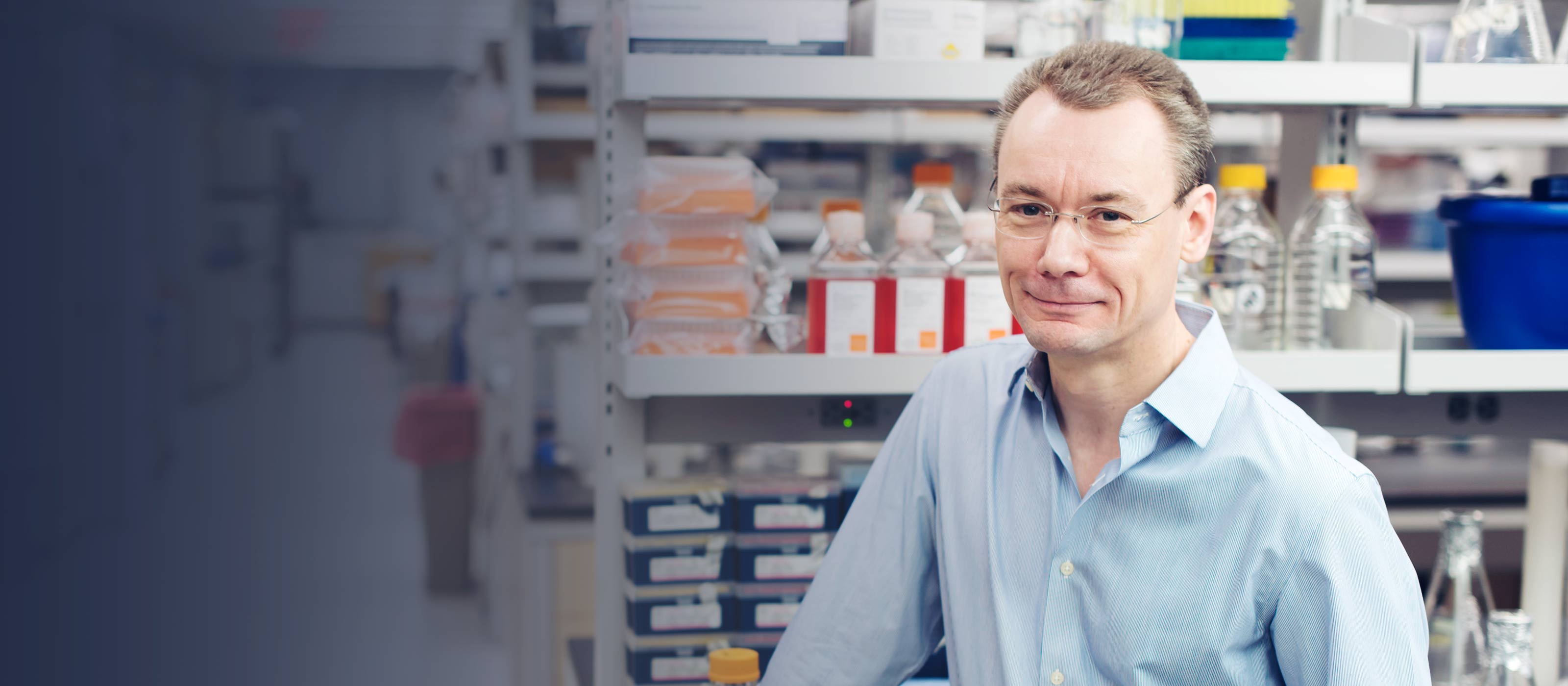Main content

Professor, Department of Microbiology
Bacterial pathogens are a serious threat to human health, particularly as our most important weapons against them, antibiotics, are losing their effectiveness due to the spread of resistant organisms. There is an urgent need to increase our understanding of bacterial cell functions, so that we can better understand our enemy, and identify weak points for potential therapeutic attack. Our laboratory is especially interested in the envelope that surrounds all bacterial cells. This cell envelope is a made up of multiple layers, including phospholipid membranes and a rigid cell wall made of the polymer peptidoglycan. The cell envelope protects bacteria from damaging molecules and conditions in their environment. Furthermore, virulence factors are assembled in the cell envelope, or must pass through it on their way out of the bacterial cell. Maintaining the integrity and functions of the cell envelope is critical at all times, including when bacteria infect a human host where they are exposed to harsh conditions, immune system attack, and must deploy their virulence factors in order to survive. We combine genetics, molecular biology and biochemistry, along with various infection models, to study important functions in the cell envelopes of two human pathogens, Pseudomonas aeruginosa and Yersinia enterocolitica.
Pseudomonas Aeruginosa
Pseudomonas aeruginosa is a frequent cause of serious opportunistic human infections, especially in hospitalized patients and people suffering from Cystic Fibrosis. We discovered that a carboxyl-terminal processing protease (CtpA) is essential for virulence because it impacts systems associated with pathogenesis, including a type III secretion system (T3SS). CtpA works in complex with the outer membrane lipoprotein LbcA to control dangerous cell wall hydrolases by degrading them. We are are exploring how this protease is controlled, the role of its substrates, and how they affect virulence. Our interests have expanded into the role of a second carboxyl-terminal processing protease, with the goal of achieving a global understanding of how these proteases contribute to virulence. Similar proteases are widespread in bacterial cell envelopes, and many have been linked to virulence. Therefore, our work will provide insight relevant to many important organisms, and how bacteria control the metabolism of one of their most important components, and a major antibiotic target, their cell wall.
Yersinia Enterocolitica
Yersinia enterocolitica is a gastrointestinal pathogen and an excellent model organism to study processes associated with bacterial pathogenesis. We have studied a specialized stress response system required to prevent lethal cytoplasmic membrane permeability. This Phage shock protein (Psp) system, is essential for the virulence of Y. enterocolitica because it prevents catastrophic damage to the cytoplasmic membrane during virulence factor export. The Psp system is widely conserved, and has been associated with virulence in other species. Our work has increased understanding of the signal transduction process that activates the Psp system, and how the Psp proteins function to mitigate cell membrane damage.
212-263-3223
430 East 29th Street
5th Floor, Room 504
New York, NY 10016
Graduate Advisor, PhD Training Program in Microbiology
PhD from University of Birmingham
Journal of bacteriology. 2025 Oct 08; e0016925
Journal of bacteriology. 2024 Oct 24; 206(10):e0022224
EMBO journal. 2024 Apr; 43(8):1634-1652
Journal of bacteriology. 2022 Apr 19; 204(4):e0062821
Journal of bacteriology. 2021 11 19; 203(24):e0039321
Journal of bacteriology. 2020 Jun 01; 202(16):